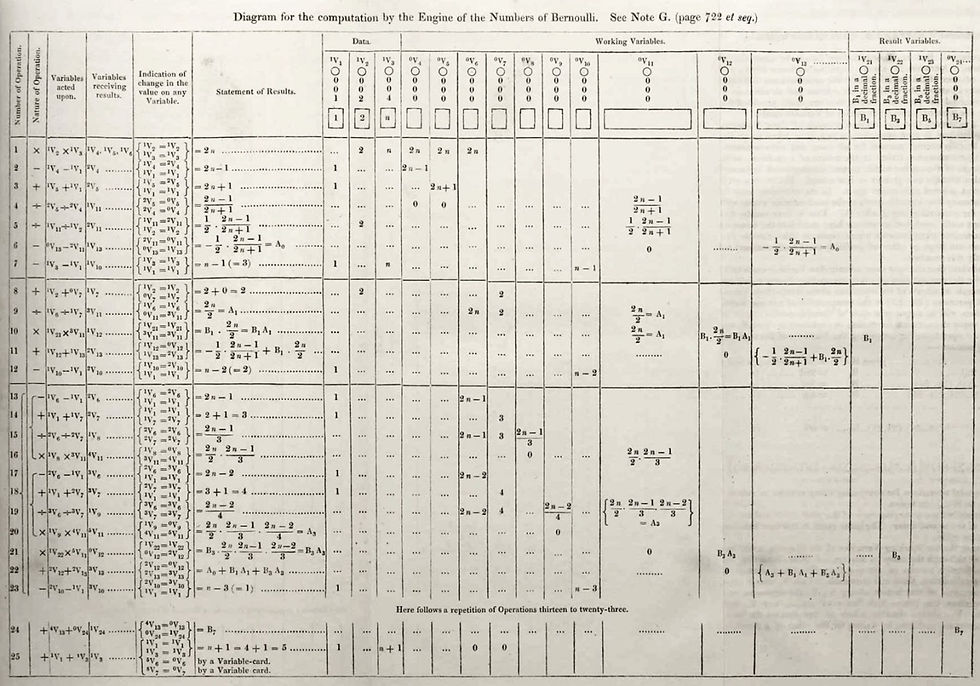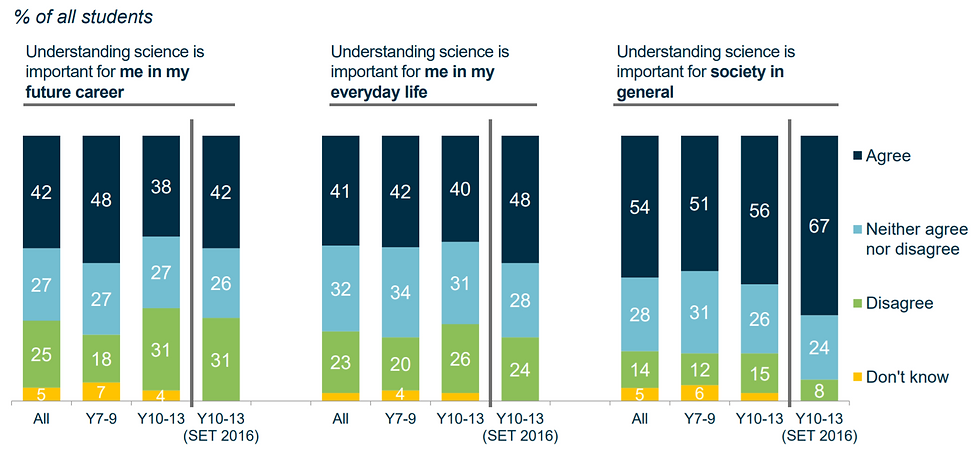The STEM School Curriculum Part I: - Is it Time for a Change?
- Mariya Tarabanovska

- Jun 27, 2021
- 5 min read
Updated: Oct 3, 2021
“STEM education should be more relevant to the lives of all young people.” - APPG on Diversity and Inclusion in STEM, 2020
Between the ages 10-18 school students, especially girls, tend to lose interest in STEM subjects (Science, Technology, Engineering, Maths). So naturally, the question arises: why is that?
Is it the lack of diversity and representation within the school curriculum? Maybe some students didn’t fully grasp the basic concepts when they were younger? Or simply some may not realise the significance and impact STEM has on our world?
All of these factors lead to many students perceiving STEM as being ‘irrelevant’ to them, causing this loss of interest.
Importance of Role Models
From personal experience, mentors and role models have greatly impacted my career choices; their experience gave me the confidence to believe in my own abilities and potential. It is reassuring and inspirational to see people of similar backgrounds to yourself succeed in career paths that you aspire to follow.
Appreciating equality, diversity and inclusion - it is important to learn about and celebrate professionals of all backgrounds. This would enable young people to see that STEM subjects and careers are relevant to them regardless of gender, race, sexuality or background. However, the current UK school curriculum does not always allow for that.
“Not a single woman’s name features in the national curriculum for GCSE science. And in a sample analysis of three double science GCSE specifications from the major exam boards, we found a total of two female scientists named. This compares to the mention of over 40 male scientists, or concepts or materials named after them.” - Teach First, 2020

School Students in STEM - IET Education, 2021
More importantly, this lack of representation in the UK school curriculum as described by Teach First leads to young girls subconsciously believing that STEM subjects are not relevant to them. Therefore, they do not perceive themselves as suitable for a career in STEM. In fact, this problem then extends further and according to Teach First, only 49% of people in Britain can name a single female scientist (Teach First, 2020).
Undoubtedly, the work of the likes of Darwin, Newton or Mendeleev has been fundamental to countless advancements in STEM. It is essential to celebrate and study the achievements of these incredible men, enabling further evolution in science and technology.
However, there is a need for a more balanced approach to showcasing STEM champions through the years. The work of women, as well as representatives of other minority groups, has also been crucial in STEM. Therefore, role models of all backgrounds should be appreciated and included in the school curriculum.
One could argue that the reason for this lack of diversity is that during the years when initial discoveries or developments in STEM were made, mainly white men had the opportunity, time and resources to achieve advancements in STEM and receive recognition. However, despite a number of challenges faced by women in the past centuries, they have greatly contributed to developments in STEM and this should be honoured. To give an example, the English mathematician Augusta Ada King (also known as Ada Lovelace) became the first person to write a computer algorithm in the early 1840s (Martin, 2018).

First Published Computer Algorithm by Ada Lovelace, 1843 (Martin, 2018)
Nowadays, women, representatives of minority ethnic groups, neurodiverse individuals and those with mobility impairments are not as scarce within STEM industries as they were a few centuries ago. In 2020, Jennifer Doudna and Emmanuelle Charpentier were the first to suggest and show that genes can be edited, for which they were awarded a Nobel Prize. In fact, this is considered to be “one of the most impactful discoveries ever made in the field of biology” (Academic Influence, 2021). As can be seen, it is vital for the school curriculum to include these inspiring STEM leaders, who are achieving incredible advancements within their respective industries in the modern-day.
This leads to the next point...
Incorporating Modern Advancements
According to the Science Education Tracker in 2019, on average only 54% of students aged 12 to 18 (UK Years 7-13) agreed that science was important for society (Kantar, 2020). This highlights how the curriculum does not sufficiently link school STEM subjects to modern advancements and applications. For example, if it was better emphasised how the operation of mobile phones highly depends on maths and programming concepts, students would have a better appreciation for how STEM is 'important for society'.

Perceived importance among years 7–13 of science for a future career, in everyday life and for society in general (2019 and 2016) (Kantar, 2020).
Understandably, if students are only exposed to STEM developments and discoveries that occurred decades ago, it may be difficult for them to appreciate the relevance of STEM topics to the current world. Therefore, these subjects need to be put into a realistic context, highlighting how modern applications solve the real-life problems of today.
STEM is more than just the detail behind the theories, but rather how they are applied to benefit societies. By emphasising this in the curriculum, students will be able to appreciate how the knowledge gained from STEM subjects is essentially a toolbox, which they can use to help others and express creativity and innovation.
Role of UAM
As an emerging industry, Urban Air Mobility (UAM) has significant relevance to modern technological advancements. Within the next decade, mass implementation of UAM is highly likely in many cities all around the globe, revolutionising the way we travel. Furthermore, a large, skilled and willing workforce will be required to support and keep up with this rapidly emerging industry.
Current school students are likely to become the future workforce, joining UAM at its prime. So, including UAM in the school curriculum would allow them to learn and be more inspired by STEM subjects and become more aware of the potential opportunities they would have in the future.
This way young people will be prepared for careers of the future, which will be applicable to them when they graduate, rather than for careers of the past.
These factors only scratch the surface of this crucial discussion, so keep a lookout for Part II of this article series, which will investigate the accessibility to STEM education.
References and Further Reading
- Academic Influence. (2021). Top Women in STEM. Available here.
- APPG on Diversity and Inclusion in STEM. (2020, June). Inquiry on Equity in STEM education Final report. Available here.
- IET Education. (2021). The Institution of Engineering and Technology (IET). Available here.
- Kantar. (2020, March). Young people’s views on science education. Science Education Tracker 2019. Available here.
- Martin, U. (2018, July 27). Ada Lovelace: the Making of a Computer Scientist. Available here.
- Teach First. (2020, February 6). Missing Elements. Available here.




With games from dozens of top software developers, like NetEnt, Pragmatic Play, and Evolution, Lucky Dreams offers an enormous assortment of games. From the newest video slots to a vast live casino luckydrcasino.com/ lobby, there's always something new to explore thanks to this enormous range. Overall, the quality is outstanding. It's a haven for gamers that like variety.